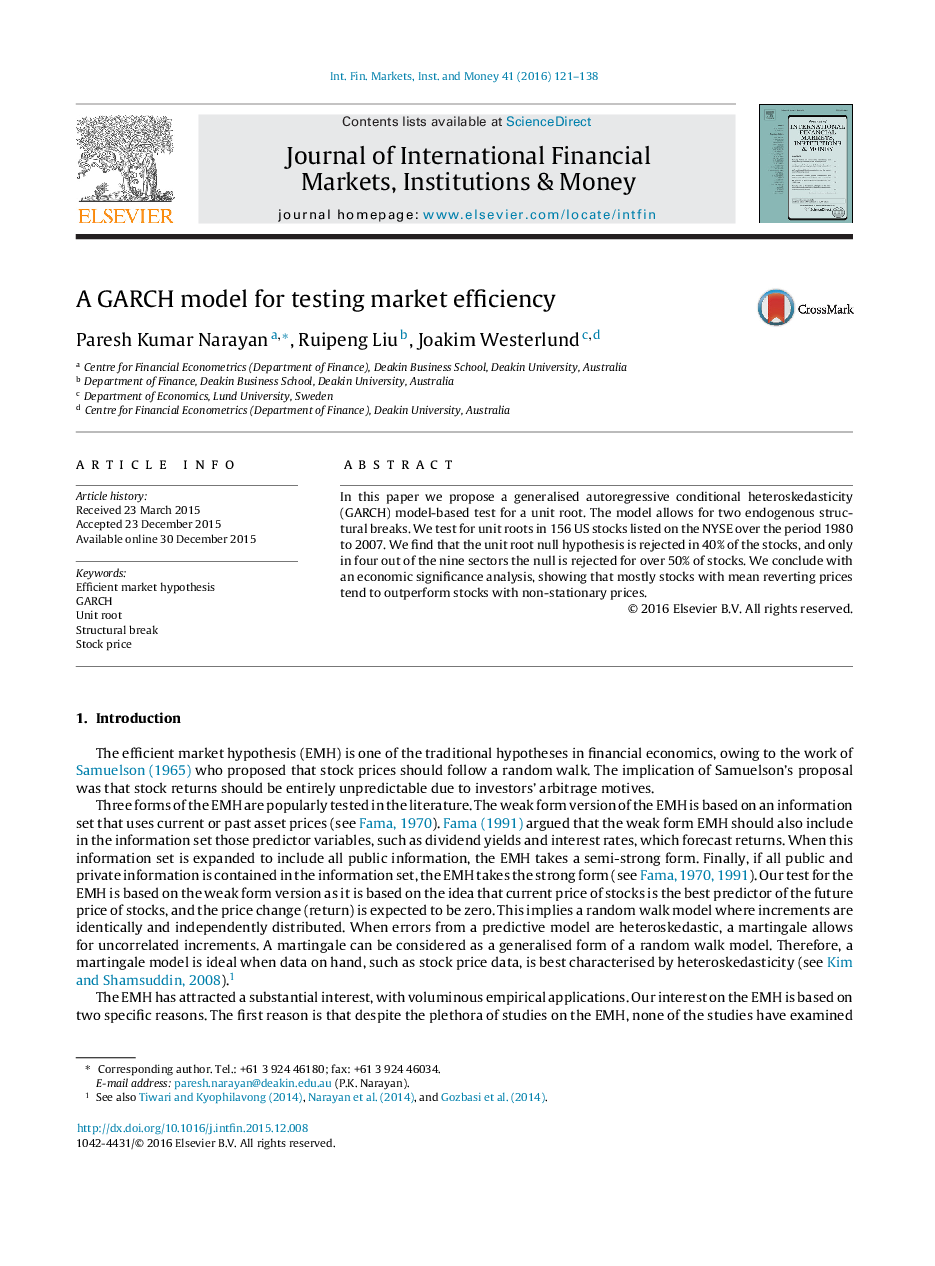| کد مقاله | کد نشریه | سال انتشار | مقاله انگلیسی | نسخه تمام متن |
|---|---|---|---|---|
| 963893 | 1479106 | 2016 | 18 صفحه PDF | دانلود رایگان |
• Efficient market hypothesis is tested for 156 US stocks.
• We propose a GARCH model with two structural breaks.
• Our proposed GARCH model performs well in large samples.
• We find that for around 40% of stocks prices are stationary.
• We find that in only four of the nine sectors over 50% of stocks have a stationary price.
• Investors can gain by incorporating unit root information in trading strategies.
In this paper we propose a generalised autoregressive conditional heteroskedasticity (GARCH) model-based test for a unit root. The model allows for two endogenous structural breaks. We test for unit roots in 156 US stocks listed on the NYSE over the period 1980 to 2007. We find that the unit root null hypothesis is rejected in 40% of the stocks, and only in four out of the nine sectors the null is rejected for over 50% of stocks. We conclude with an economic significance analysis, showing that mostly stocks with mean reverting prices tend to outperform stocks with non-stationary prices.
Journal: Journal of International Financial Markets, Institutions and Money - Volume 41, March 2016, Pages 121–138
